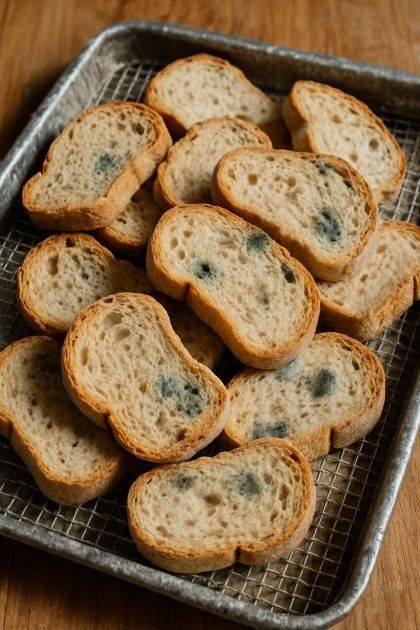“Moldy Bread” usually isn’t something anyone wants to eat! But if you’re asking about it for a scientific or educational reason, like how mold grows on bread or how to recognize it safely, I can definitely help explain.
What is Moldy Bread?
-
Mold on bread happens when spores from fungi land on it and start growing, especially in warm, moist conditions.
-
Common bread molds include Penicillium, Rhizopus, and Aspergillus.
-
Mold can look fuzzy, white, green, blue, or black.
Why is Mold on Bread Bad?
-
Eating moldy bread can cause allergic reactions or respiratory problems.
-
Some molds produce mycotoxins that are harmful if ingested.
-
It’s safest to throw moldy bread away completely.
How to Avoid Mold on Bread:
-
Store bread in a cool, dry place.
-
Keep bread in airtight containers or bags.
-
Freeze bread if you won’t use it soon.
-
Buy smaller amounts if you don’t eat it quickly.
If you want, I can share fun science experiments or pictures showing how mold grows on bread over time — or help with recipes that prevent bread mold, or ways to salvage slightly stale bread safely.
